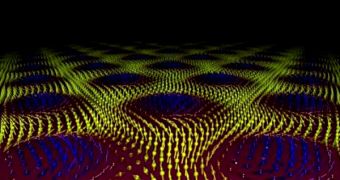A group of German investigators from the Technische Universitaet Muenchen (TUM) and the Universitaet zu Koeln (UzK) recently managed to develop a new technology that may enable the faster writing and processing of data inside next-generation computers.
This is one of the main goals in the industry today, and most manufacturers are investing heavily in research&development (R&D) for achieving this goal. The German physicists may have just broken through in this field.
Computers today need to be faster, smaller, and more energy-efficient with each new generation, and companies that manage to do so are guaranteed a place on the market. This is why the new achievement is so very important, and also timely.
The TUM/UzK team presented its technology in the December 1 issue of the top journal Science, where they explained how they managed to observe peculiar interactions in a new material using a detector installed at a neutron source facility.
What the group created was basically a way of putting magnetic vortices lattices in motion on the surface of a material using electrical currents that were almost a million times weaker than earlier studies thought possible.
The way the electric current coupled with the magnetic structure could be observed by using TUM's FRM II research neutron source, the investigators say. They add that the focus of such studies is to find ways of inscribing magnetic information directly to media via electric currents.
This particular study was made possible by a discovery made in 2009, when TUM Physics Department professor Christian Pfleiderer discovered a new magnetic structure in a crystal of manganese silicon.
The material featured what the expert referred to as a lattice of magnetic vortices, which is precisely the type of structures that was targeted in the new investigation.
According to Pfleiderer, the possibilities made available to the team by the FRM II facility were critically important for making these discoveries. The neutron source is located right next to the TUM Physics Department.
“This means fantastic access to a large installation, which you don’t have anywhere else in the world,” the German expert reveals.
“We can take the crystals that are produced in our laboratories in the physics department straight across the way and measure the magnetic structure, its dynamics and many other properties with neutrons,” he goes on to say.

 14 DAY TRIAL //
14 DAY TRIAL //